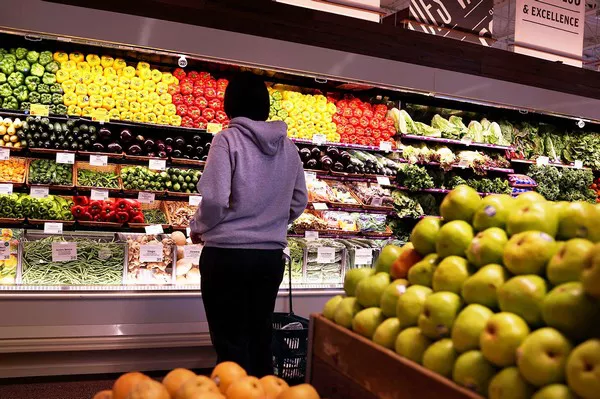Access to nutritious food is a fundamental component of managing diabetes, yet many individuals with this condition grapple with food insecurity, which hampers their ability to access essential sustenance for healthy living. Recent data reveals that nearly 20% of people with diabetes experience some degree of food insecurity. Moreover, specific demographics within the type 2 diabetes population, including Black and Hispanic individuals and those without a high school diploma, are at a heightened risk of facing food insecurity.
Dr. Seth Berkowitz, an associate professor of medicine at the University of North Carolina Chapel Hill, underscores that food insecurity plays a pivotal role in exacerbating health disparities. Research indicates that individuals lacking consistent access to nutritious foods are more prone to developing obesity, type 2 diabetes, or gestational diabetes. Addressing this pressing issue demands a multi-faceted approach that combines both medical and societal efforts.
The Impact of Food Insecurity on People with Diabetes
Food insecurity significantly impacts the health of individuals, worsening parameters such as A1C levels, blood pressure, and cholesterol. Moreover, it can contribute to complications related to diabetes. Dr. Berkowitz identifies three primary pathways through which food insecurity negatively affects diabetes outcomes:
Nutritional: Limited access to nutritious options often leads people to opt for cheaper, less healthy foods, consequently increasing body weight.
Financial: Individuals with diabetes may face a difficult choice between allocating their funds to medications or nutritious foods, diverting their focus away from effective diabetes self-management.
Psychological: The stress associated with food insecurity can elevate depression and diabetes distress levels, compounding the challenges faced by those with diabetes.
These factors, whether acting independently or synergistically, can worsen metabolic control and elevate the risk of cardiovascular complications. Furthermore, the burden of food insecurity can drain individuals’ energy, impeding their ability to effectively manage their diabetes.
Barriers to Healthy Eating and the Role of Healthcare
Food insecurity is recognized as one of the social determinants of health, alongside factors such as safe housing and economic stability. In the 2023 Standards of Care, the American Diabetes Association (ADA) has intensified its call for healthcare providers to address social determinants of health as an integral component of diabetes care. The Hunger Vital Sign, a simple two-question screening tool, is widely utilized to identify individuals grappling with food insecurity in clinical practice.
While barriers to healthy eating persist, there has been a notable increase in awareness regarding food insecurity in recent years. By improving screening for food insecurity within the healthcare system and subsequently implementing interventions to enhance food access, healthcare costs may be minimized in the long run.
Efforts to Enhance Nutrition
In recent years, researchers, led by Dr. Berkowitz and others, have explored innovative solutions within the ambit of the “Food as Medicine” movement. These initiatives include:
Cash or Near-Cash Programs: Programs like the Supplemental Nutrition Assistance Program (SNAP) and the Special Supplemental Nutrition Program for Women, Infants, and Children (WIC) provide essential food benefits to low-income individuals and families. Some programs even offer “produce prescriptions” akin to medical prescriptions, which can be exchanged for fruits and vegetables.
Foods Distributed in Kind: Non-profit organizations and food banks play a vital role in improving food access. These entities not only offer nutritious food but also conduct screenings for conditions like diabetes, making them crucial partners in addressing food insecurity within at-risk demographics.
Medically-Tailored Meal Programs (MTM): These programs offer customized, fully prepared meals for individuals with chronic conditions such as diabetes. The meals are tailored to the recipient’s specific health needs, as assessed by a registered dietitian. While full replacement MTM programs have a significant positive impact, they are cost-intensive. Partial replacement MTM programs, which provide about half of a person’s weekly meals, are more cost-effective but offer fewer health benefits.
A Comprehensive Approach to Tackle Food Insecurity
Dr. Berkowitz emphasizes a comprehensive approach to addressing food insecurity both within and outside the healthcare system. Key components of this approach include:
Enhanced Income Support Programs: Implementing robust income support programs and improving their implementation are essential steps.
Psychosocial and Material Support: Healthcare providers should offer psychosocial support and link individuals to available community resources. Material resources, such as medically-tailored meals, food pantries, and food subsidies, are crucial in improving access to proper nutrition.
In conclusion, tackling food insecurity is a complex challenge that necessitates a dual approach—simultaneously addressing structural issues in society and implementing healthcare solutions. Many organizations and government programs have embraced the “Food as Medicine” initiative to address the ongoing needs of individuals facing food insecurity, with the ultimate goal of improving the health and well-being of vulnerable populations.

